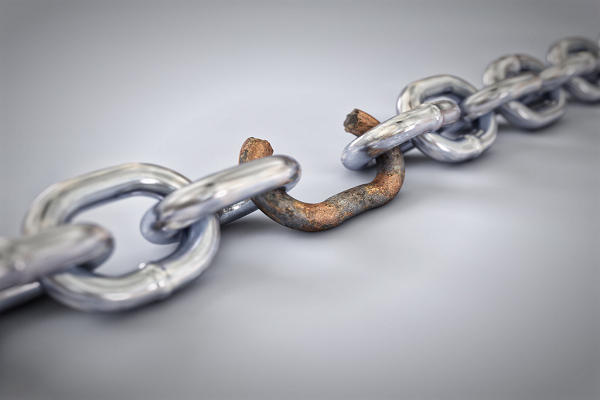How to Fix a Broken Property Chain with a Bridging Loan

For some time, investment property purchases have been the most common use for bridging finance in the UK. More aspiring and established investors than ever before are looking to leverage the explosive competition in the UK housing market, using fast-access bridging loans to fund time-critical property purchases.
Meanwhile, a growing contingency of homeowners is turning to bridge finance for an entirely different reason. Second only to investment property purchases, breaking free of property chains is now the second most common reason for taking out a bridging loan.
During the first six months of the year, at least one in every five bridging loans was issued for this purpose.
The risk of broken property chains
Never has competition for quality homes in desirable parts of the UK been greater. Even so, there are no guarantees at any point during the property purchase process that the transaction will go through.
Incredibly, research suggests that up to 25% of all residential property sales fall through due to broken property chains. The longer and more complex the property chain, the higher the likelihood of one or more links being compromised.
A property chain is defined as “a line of buyers and sellers linked together because each is selling and buying a property from one of the others.” When buying or selling a home, you are at the mercy of every other buyer and seller within the same property chain.
Should any property sale or purchase fall through before your own transaction is complete, it may be rendered unviable.
Why do property chains collapse?
Nobody lists a property for sale with the intention of the transaction falling through. Even so, there are many reasons why a property chain can and does collapse with such regularity.
Typical examples of this include the following:
- A change of circumstances for the buyer or seller, rendering them unable to continue with the transaction.
- The buyer or seller of a property simply changes their mind at some point during the deal and withdraws from the chain.
- A competing bidder submits a higher bid that is accepted by the sellers, despite them having already agreed to sell the property to someone else.
- Mortgage applications may encounter disruptions and delays, or a decision in principle may be reversed for any number of reasons.
- A survey conducted on a property may uncover unexpected problems and structural issues, rendering the agreement null and void.
In each of the above instances, the property chain comes crashing down and brings all sales and purchases therein to a grinding halt.
Fixing property chains with bridging finance
This is where bridging finance can offer an invaluable lifeline to those looking to escape the trappings of the conventional property chain. With a bridging loan, you borrow money against the value of your current home, which is used to purchase your next property for cash.
Along with speeding up the purchase process, these types of transactions are in no way reliant on any other buyers or sellers. In addition, cash buyers are often afforded additional incentives by sellers looking to complete transactions on their homes as quickly as possible (often up to 2% off the home’s standard purchase price).
For faster and more convenient than a conventional mortgage, a bridging loan can be organised and accessed within a few working days. The full balance is then repaid when the borrower’s previous property sells for its full market price, a few weeks or months down the line.
“I’m not surprised that chain-break finance is one of the top reasons to use bridging loans. Property transactions are booming, and we’re seeing a large number of solicitors trying to exchange and complete on the same day,” said Dale Jannels, Managing Director of Impact Specialist.
“This inevitably will result in people pulling out of purchases late on, and therefore clients need a short-term loan to fill the gap their buyer left behind.”
